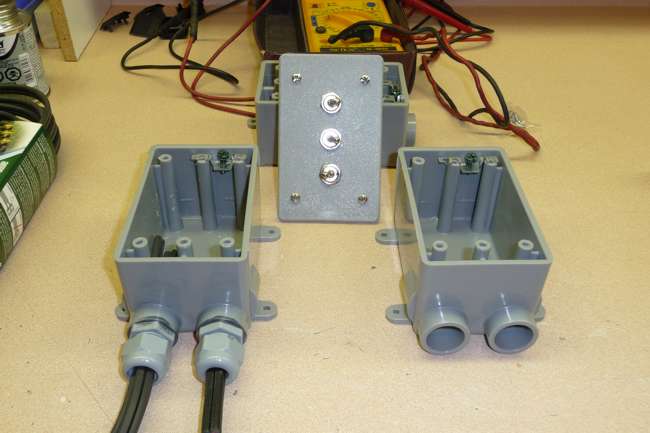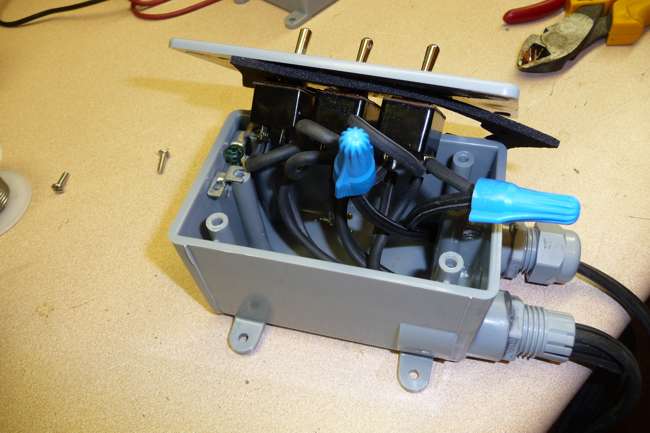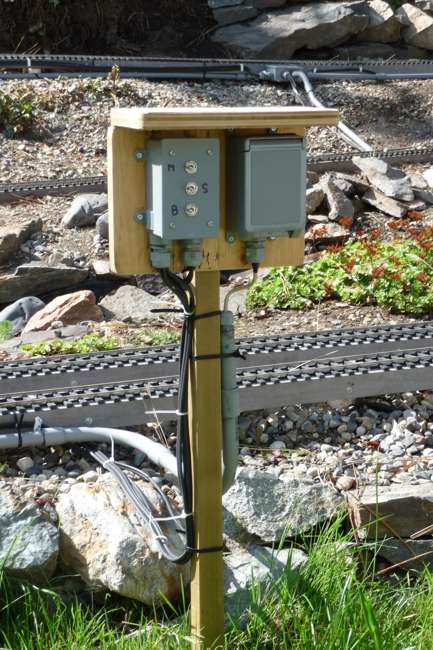|
|
|
|
|
|
Almost like the prototype...
|
|
|
|
|
|
|
|
|
... at least as far as function is concerned. DCC supposedly has the advantage of requiring just the two wires and things will hum. True, if it is a very simple layout with few auxilliary functions. If it isn’t the “Only Two Wires” scheme could make for some very frustrating trouble shooting. So many possibilities and where should one start? Depending on the size of the layout and the number of different items connected it could take quite a while to find problems. This applies even to bus schemes which are not subdivided into power districts, any number of possibilities.
|
|
|
To eliminate that it was decided to divide the mainline. Similar to the prototype each mainline section between stations can be isolated, the same applies to each of the stations. Weatherproof enclosures are used to house the components.
|
|
|
|
|
|
|
|

|
Materials
|
|
|
|
|
|
|

|
Heavy cables, little room..
|
|
|
|
|
|
|

|
Distribution post “Seedorf” together with the distribution box of the CAN-Bus for Walk-Around operation with the plug-in throttles.
|
|
|
|
|
|
|
The main DCC-Bus is a continuous #12AWG cable. The feeders from the distribution panels are #14AWG cables
|
|
|
|
|
|
|
|
|
|
|
To be continued
|
|
|
|
|
|